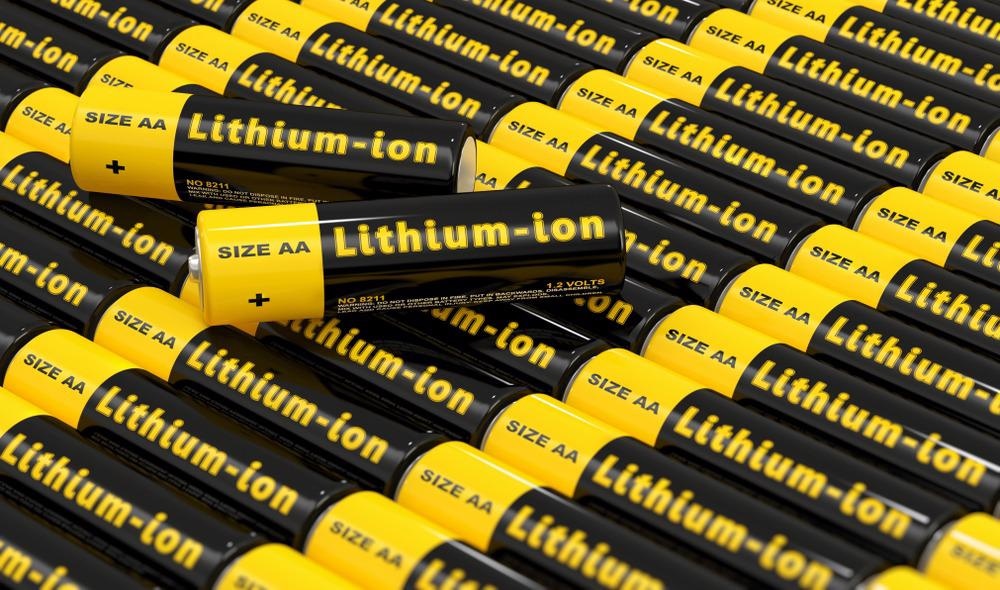In a study published recently in the Journal ACS Applied Materials & Interfaces, the large-scale production of an interesting micro/nanostructured pore-rich Si/C microsphere composed of Si nanoparticles was studied.

Study: Scalable Synthesis of Pore-Rich Si/C@C Core–Shell-Structured Microspheres for Practical Long-Life Lithium-Ion Battery Anodes. Image Credit: Lightboxx/Shutterstock.com
What are LIBs?
LIBs (lithium-ion batteries) are key sources of energy with a high energy density. Because of its excellent specific capacitance of over 3500 mAh g-1, availability, and ecologically acceptable characteristics, silicon (Si) has been regarded as a viable choice for next-generation high-intensity lithium-ion batteries anode material.
Nonetheless, the use of Si anodes is hampered by a large volume enlargement during repetitive charging and discharging processes, which causes structural pulverization of electrocatalysts and quick performance deterioration. Furthermore, Si anode compounds have high conductivity, resulting in low processability.
Benefits of Microscale Si/C Alloys
Incorporating conducting material elements, like Si/C composites and Si metals, into composites can efficiently compensate for weak electrical properties.
The development of nanostructured Si products can help to absorb the large volume fluctuation of Si and increase its life span. However, nanostructured conductors encounter extra obstacles that must be solved.
The increased effective surface area of nanostructured conductors results in more ions being used, leading to a low starting Coulombic efficiency (ICE). However, the reduced volumetric power density generated by the smaller tap is harmful to the useful features of Si anodes.
Micro-sized Si-based compounds, on the other hand, have a higher tap density and storage capability than their nanometric equivalents.
Microscale Si granules are more prone to suffer from morphological pulverization and low ion/electron transportation effectiveness throughout the production cycle, resulting in fast capability loss.
Particular Si nanoparticles are closely coupled with carbonaceous components in such a micro/nanostructured substance, and they are linked in a three-dimensional (3D) device structure. This one-of-a-kind design improves active material conductance, decreases secondary reactions of Si with the electrolytes while cycling, and boosts the tap densities of Si-based semiconductors, resulting in increased cycling efficiency with excellent dimensional power density.
Methodology Followed
A modular technique for fabricating an exciting micro/nanostructured pore-rich Si/C microsphere was introduced. This structural concept merges nanostructured Si nanomaterials and the nanoscale cross-linked C matrices with the external strong C shell and demonstrates a number of appealing qualities that favor higher efficiency.
In particular, the as-synthesized P-Si/C@C has an abundance of interior holes, which provide ample interspace to ease the massive volume change of Si while also speeding the kinematic phase of Li+ migration in the electrodes.
P-Si/C nanomaterials placed in a cross-linked C matrix increase Si conductance and prevent electrolytic aggregation. The as-fabricated P-Si/C@C electrode had a large ICE of around 90 percent, excellent changeable ability, and exceptional cycle life, outdoing numerous Si/C reinforced anodes in initial studies. Furthermore, the P-Si/C@C nanoparticles had a minimal electrodes inflation of 18.1% at a significant areal capability.
Highlights of the Study
A sustainable way to produce fascinating fundamental P-Si/C@C microspheres by spray-drying and CVD procedures was established using sulfates as the pore-forming chemicals.
Its electrolytic efficiency can be enhanced by the design and architecture of the micro/nanostructured P-Si/C@C specimen because of the extraordinary benefits of nanometric Si, micro-sized cross-linked C matrix, and exterior C nanocoating that are provided by this composition.
The fabricated P-Si/C@C electrodes exhibited exceptional electrocatalytic activity, including a large ICE of about 90 percent, outstanding repairable ability, and outstanding cycling effectiveness. This was due to the structural advantages of the diodes.
It was possible to achieve amazingly low cathode inflation of 18.1 percent while keeping a strong aquifer efficiency. Amazingly, when combined with a commercial NCM electrode and installed in a conical nucleus, the filled unit exhibited better cyclability with larger storage preservation of 81.4 percent after 1200 cycles at 1C and outstanding conversion efficiency with a very high specific capability at wide temperature ranges, illustrating the substantial demand for real implementations in this configuration.
The research results strongly demonstrated that the P-Si/C@C microparticles with a large concentration have immense promise as alternative solutions to the currently commercialized graphene anode material for next-generation large lithium-ion batteries and that they provide essential guidance for the development of large nickel-based anodes, among other things.
Reference
An, W., He, P., et al. (2022). Scalable Synthesis of Pore-Rich Si/C@C Core−Shell-Structured Microspheres for Practical Long-Life Lithium-Ion Battery Anodes. Applied Materials & Interfaces. Available at: https://pubs.acs.org/doi/10.1021/acsami.1c22656
Disclaimer: The views expressed here are those of the author expressed in their private capacity and do not necessarily represent the views of AZoM.com Limited T/A AZoNetwork the owner and operator of this website. This disclaimer forms part of the Terms and conditions of use of this website.